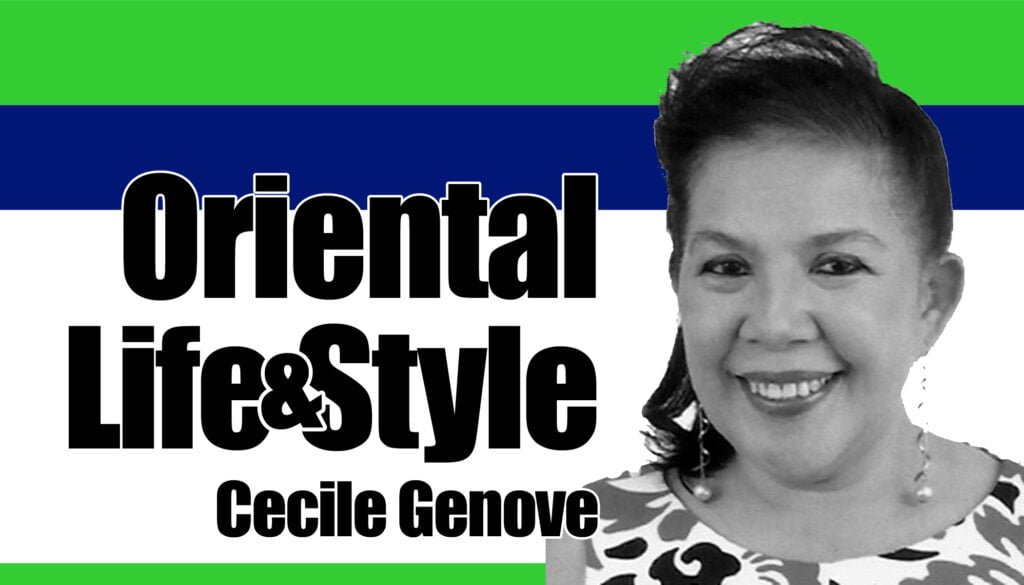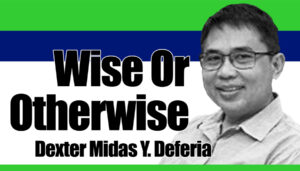
World Teachers Day or World Teachers Month was commemorated on October 22 by the Negros Oriental State University (NOrSU) Bayawan-Santa Catalina Campus anchored on the theme about empowering educators to foster an inclusive and gender-fair academic community. At no other point in our country’s history has it been felt more than ever than today.
The call for inclusivity or inclusion in all sectors of society has been deafening. Equality has likewise been emphasized in all its essential demands, stipulations, and conditions and preconditions. In other words, inclusivity, not exclusivity, is the call of the times, which encompasses gender impartiality or gender equality, which is among the United Nations Sustainable Development Goals, that is, to “achieve gender equality and empower all women and girls.”
Today, writing about women, at least here in the Philippines, has been quite a sensitive, oftentimes controversial endeavor. Some find it awkward or may not entirely know how to go about writing about women or how to treat women in their writings. The movement for equal rights for women, including the right to be reported on fairly, has snowballed.
Writing about women is more than the physical aspects of being tough, independent, and highly spirited. It is the conscious effort of adapting non-sexist writing, not favoring men over women and adapting the double standard of morality. To my mind, one who is incapable of writing fairly about women is synonymous to having a misogynist attitude.
Not a few Filipino journalists might be presumed to ask if confronted with a set of guidelines on how not to discriminate against women as a subject in print as well as broadcast. Like the widely held view that Filipino women do not need to be “liberated” because they are even more privileged than the men, sexism in journalism is a reality that few would admit.
It is true of the less respectable tabloids where pictures of scantily clad women and stories of which movie starlet or newbie stole whose boyfriend are frequent sales boosters. It is not necessarily true with broadsheets or the major metropolitan newspapers where everyone looks out after style, content and, certainly, language.
Much of sexist or sex-exclusionary writing, however, is not overt. The use of “man” as a generic term to refer to both women and men, for example, has long been accepted as correct expression, but it works against women because it renders them invisible, trivial, and less worthy of respect than men.
Such writing is found right in some newspapers or news references. For instance, a familiar line in news copy goes: “Bayawan City Mayor Jack Raymond told newsmen…” This, even in stories bylined by women. Today, this has been corrected to refer to newsmen as reporters or the media.
Further saying that all journalists are male is the following lead: “The press is fair-haired boy to government officials receiving positive attention and, at the same time, whipping boy to those getting adverse publicity.” Note that “fair-haired boy” and “whipping boy” are idiomatic expressions.
In an article on ecology, another author said: “For the most part these warnings have been ignored by the man-in-the-street, who was encouraged to believe…” Although “man-in-the-street” is supposed to mean the ordinary citizen, it is a trousered, bemoustached, two-legged creature which the mind usually conjures, in effect claiming that ecology is a concern only of the men. Thus, why not use “ordinary citizen,” instead.
Worse, when it comes to critical pieces, it is the women who are usually held up as representatives of the species being criticized. This is illustrated by the following excerpts from an article on the nouveau riche:
“The nouveau riche wear diamonds during the day and flash eight-karat rocks on their earlobes at night. They wear huge rings, are fully coiffed and made up even if they are only going to bring the poodle to the veterinarian. They talk too loud, act too loud.
“It’s hard to pinpoint the careers of the nouveau riche. But, one thing is sure: the nouveau woman is not your Ayala female executive lugging a briefcase full of papers to work. She is a lady of leisure who brunches, snacks and dines the whole day with her amigas. That’s work. Leisure time means mahjong matches, chismis (or what we know now as marites–ing), more merienda and reading the gossip columns.”
There are numerous guidelines that would help not only journalists, but also teachers and researchers, to abide by good writing. After all, good writing is one that is also fair and precise.
The representation of gender in news coverage, most especially on television, is also evident today, which means, looking at how men and women are shown or treated in news programs. It is not just about who appears, but also how they are described and what roles they are given.
Are men and women given equal time on screen? Often, men appear more in politics and business, while women are seen in lifestyle or human-interest stories. Stereotyping is rampant as news may still show women mainly as mothers, victims, or entertainers, while men are shown as leaders, experts, or authority figures.
The newsroom itself matters. If more men are in charge of deciding what stories are told, women’s voices and issues may be left out. The way gender is shown in news shapes how people see men’s and women’s roles in society. Balanced representation helps promote equality.
When a female celebrity enters politics, the news may focus on her clothes, beauty, or personal life, while for male politicians, the focus is on their platforms and policies. This reinforces the idea that women are valued more for looks than ability.
In many newsrooms, anchors are often paired as a male-female duo, but the male anchor usually reads the “hard news,” like politics, crime, the economy, while the female anchor reads “soft news,” like lifestyle, health, and human-interest. This again reinforces traditional gender roles in journalism.
If the news repeatedly portrays women as victims, emotional, or focused on beauty, people may believe these traits define all women. Similarly, showing men only as strong or aggressive limits how society views masculinity.
Unbalanced coverage can make gender inequality seem “normal.” But, balanced, fair, and diverse representation can challenge stereotypes and promote gender equality by showing that both women and men can excel in all fields.
In the academic front, the experience of fostering inclusivity and promoting a gender-fair environment at Foundation University is worthy of emulation. Guided by the Philippine Professional Standards for Teachers with a focus on learner diversity, the inclusion specifically at Foundation Preparatory Academy, which houses the kindergarten, preparatory, grade school, junior high school, and senior high school departments, goes beyond gender roles. With the appointment of a special needs interventionist, who is also a teacher, the responsibility harbors on addressing pupils who have certain behavior disorders, like autism spectrum disorder, attention-deficit/hyperactivity disorder or ADHD, and the like, ensuring that they are able to blend into mainstream classroom, or what is now called as an inclusive class environment.
In the college or tertiary department, the facilities have been meticulously built to answer to the needs of students who are physically challenged or may be struggling with a handicap. Although these physical structures are mandated by law for persons with disabilities, measures are instituted like assigning a student who may be handicapped to a classroom on the first floor.
Moreover, Foundation University is, by far, the only university with gender-inclusive comfort rooms, which are labeled as unisex. It was welcomed favorably by the academic community as well as by parents and guests, complimenting it as progressive, which is part of the recalibrated vision of the university to, among others, respond to societal needs and offer opportunity for all.
We have been entrusted to create academic communities that are truly inclusive and supportive. Just as we encourage our students to be creative and to have minds of their own, we likewise want them to exhibit their true, authentic selves. As the oft-repeated adage goes, there is unity in diversity. | NWI




